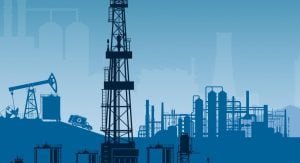What should I know about ‘compostables’?
Plastic waste is a growing concern across the world. The problem is a complex one, including waste exports from the global north, limited recycling, contamination, overproduction etc. But at the core, there is one property of plastic that has created most of its problems, despite it being an otherwise incredible material.
Non-biodegradability.
All forms of traditional plastic that we see around us today, including PET, LDPE, HDPE and PP, are petrochemical derived. Their synthesis involves complex polymerization of hydrocarbon chains, that don’t biodegrade (or break down naturally into water and carbon dioxide). As such, plastic can live on in the environment indefinitely – up to thousands of years for certain grades.
In the interim, this plastic breaks down into small pieces (not biochemically, but just physically) – creating ‘microplastics’. There are currently estimated to be 50-75 TRILLION pieces of plastic and microplastic in the ocean, and unfortunately it is now making its way back to us through the food chain.

It would’ve probably been somewhat better if this ‘non-biodegradable’ material stayed physically and chemically intact. But in addition to the physical degradation above, discarded plastic also leaches toxic chemicals into water bodies and landfills where it decays. This can sometimes include heavy metals and carcinogens – infiltrating food and water systems of local communities.
Is there really a solution?
In an ideal world, where (let’s assume) we were starting from day 1 of using plastic – it would be used strictly as a durable. That way, it would be repurposed and managed without causing significant environmental harm. But the way modern lives have evolved, it is hard to imagine a world without single-use plastic. A specific example is packaging – including bottles, wrappers, food containers, and multi-laminate pouches. What other material can offer the flexibility, inertness, moisture barrier and affordability comparable to plastic? There are product and consumption innovations (like refilling) that can help reduce single-use plastic to some extent. But expecting elimination would be unrealistic.
So?
The two key problems posed by petrochemical based plastic are:

- Birth – Petrochemical based hence high carbon footprint, resource intensive production process
- End of life – Not biodegradable, breaks down into microplastics, leaches toxins into the environment
Enter – Compostables or ‘Bioplastics’
A lot of advancement has happened in this class of materials in the past 5 years, but as an overview, bioplastics have the following properties:

- Birth – Manufactured from plant based starches including tapioca, corn and sometimes even agricultural waste. Typically a fermentation process that is not as polluting as polymerization of petrochemical-based plastics.
- End of life – Most blends currently available are ‘industry compostable’, for example Polylactic Acid (PLA). This means they would break down into water and carbon dioxide under relatively high heat and humidity conditions. Some bioplastics like PBAT and PHA are compostable under much easier conditions like a backyard composter, plant soil or even marine water.
Functionally, bioplastics can now be considered comparable to traditional plastics. They offer reliable moisture barrier and sealing properties, can be blow-molded into bottles, containers and pouches. They’re still priced at 3-8x of traditional plastic but that’s a topic for another day 🙂
So shouldn’t we just scale this, and problem solved?
Actually, no.
> As mentioned above, unless made from agricultural waste at scale, bioplastic production could divert valuable resources away from food
> They also need very specific conditions for biodegradation, in the absence of which they end up behaving like traditional plastics. Hence, till large scale industrial composting infrastructure is ready, scaling bioplastic production could be counter-productive.
> PLA is commonly available now and pricing has reached 2-3x of traditional plastics in a short duration. But more advanced bioplastics like PBAT, PHA and PBS are still extremely expensive.
So what should I do?
Ground rule – REDUCE.
There are some single-use plastics that can be easily eliminated by reusables. Examples include carry bags, coffee cups, cutlery and straws. Transitioning from plastic to ‘compostables’ for these products is quite futile, especially if the compostables end up in landfills. Switching to reusables for these easily avoidable single-use items is the most logical step.
In some cases, bioplastic transition has been extremely valuable. For example, as agricultural mulching sheets, they serve the water-channeling purpose and then eventually biodegrade in the soil. They have also found application in packaging concentrated consumer products that can be diluted with water at home – reducing the overall packaging need and carbon footprint of transporting water.
As both industrial and composting practices gain popularity, bioplastics will certainly become an important tool to reduce our dependence on petrochemical based plastics. Till then, as consumers, we should treat these materials carefully and not switch to them simply because they are ‘bio-based’. Their environmental impact may be lesser than that of traditional plastic, but they still need resources for production and for managing end-of-life.
To conclude: First Reduce single-use, whether petrochemical or bio-based plastic.
Re-use everything you have.
Recycle anything you can.
Then, Replace with bioplastics only when it makes sense!
Explore our home-care concentrates for handwash, dishwash and toilet cleaner packaged in home-compostable bioplastic pouches.

